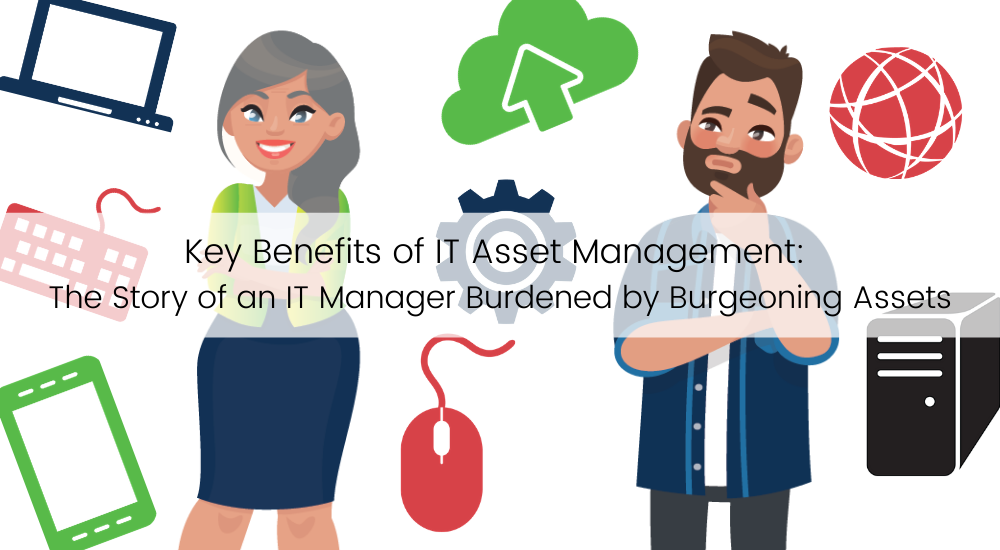
Once upon a time, in the land of corporate giants, there lived an IT manager named Fredmund, a well-loved technology guru, valued across the enterprise.
Fredmund is talented. And capable. And a little bit worried that his company's growth might max out his team's ability to maintain control over burgeoning assets.
While supportive of the organization's success, Fredmund is worried about the IT side of business growth and the resources needed to meet operational expansion. He knows growth means additional procurement, tracking, and management of all onboarded assets.
Angela has clipboards and spreadsheets galore, but licensing expiration dates and support contract coverage live in her head. And somehow, she manages it all. But who else is capable and ready to manage the company's assets as Angela has all these years? Fredmund looks at his team and a stack of resumes . . . nobody.
Fredmund is worried about licenses lapsing, impacting customer access. He's also concerned about the security risks associated with forgotten assets inviting vulnerabilities into his network. He hates to be cynical, but his team knows as well as he does that with Angela gone, a company laptop with the company's proprietary designs may conveniently "disappear."
Fredmund understands that managing a growing number of IT assets, with constant rotations of onboarding and offboarding, is nearly impossible with limited resources. He remembers his frustration when software on his laptop failed. Tech support explained that his coverage expired, and he was forced to sign an expensive service contract to restore functionality. He shuddered to think about the cost should that mistake happen on a corporate scale.
Fredmund needs an integrated asset management solution that tracks asset distribution, procurement orders, warranties, licensing, ownership, entitlements, support contracts, and end-of-life decommissioning. He needs a solution that essentially controls every asset's entire lifecycle and protects the company against loss, unpredictable IT spend, and service interruptions.
Why is IT Asset Management important for the business?
Asset management is far more comprehensive than simply tracking assets; it is a holistic approach to organizational accountability and resource strategy. If implemented and maintained properly, it offers high-level risk management, including compliance policies, insurance coverage, detailed inventories, maintenance records, software licensing, and equipment conditions.
Asset management is proactive and strategic; it can streamline processes and offer protection against redundant spending, long incident and resolution times, and wasted resources. Deploying assets within a single system-of-record, with integrated workflow for procurement, contracts, and lifecycle, makes good business sense. Knowing when support contracts and licensing agreements expire will protect against service disruptions, customer frustration, and downtime.
Now is the time to account for your IT spend and frantic asset distribution prompted by the pandemic. Take control. Verify what you have, where you have it, who is responsible for it, and then tether it to your network to maintain functionality. Navigate the mess made by initiating a comprehensive asset management program to create a long-term strategy to maximize operational efficiencies and resources.
How can an Asset Management Solution help IT Teams?
-
Reduce cybersecurity risks
-
Delineate asset responsibility and ownership
-
Avoid service disruptions
-
Save man-hours hunting for inventory
-
Repurpose existing assets
-
Knowledge around asset lifecycle
How can an Asset Management Solution help Executives?
-
Predictable IT spend forecasting
-
Avoid audit penalties
-
Drive efficiency
-
Visibility into inventory and exposure
-
Ensure compliance policies
-
Better negotiating power with vendors
-
Understand how assets impact business performance
Why TBC?
TBConsulting is a Phoenix-based MSP devoted to helping clients solve their business problems with our IT service delivery solutions. Our Integrated Asset Management solution offers comprehensive coverage and tracking for your entire suite of assets. Our team of experienced ServiceNow-certified developers developed this integrated solution of ServiceNow workflows, forms, and tables to manage the whole asset lifecycle from procurement to end-of-life.
We understand that the best systems will not work without the people who drive the workflows. Our team of business analysts provides best practice guidance on asset management and procurement management. Lost devices, lapsed licenses, expired support contracts, and hidden inventory are things of the past. Instead of reacting to issues caused by scattered and vulnerable resources, you can actively protect, budget, and deliver audit-worthy IT asset controls.
.png)

